
Ranking in Google’s Knowledge Graph in 2017: How Artificial Intelligence Plays Its Part
Note: This is a guest post authored by Kylie Ora Lobell, Content Marketer at Directive Consulting. The brand specializes in comprehensive search marketing campaigns for industry leading B2B brands.
In 1998, Google started out as a simple search engine. Now, it’s evolved from an information engine to a knowledge empire.
Google wished to be the ultimate inventory for every subject, and the number one place where people go to find out facts on any and every topic imaginable.
Nineteen years after its inception, the company has accomplished this goal.
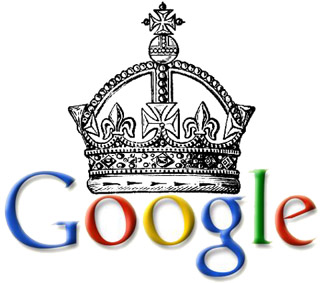
Nowadays, businesses and brands fight for those top spots on Google. The search engine giant opts for placing paid ads throughout the page, meaning there is a lesser real estate for companies looking for organic traffic.
Plus, search results that appear on pages without ads experience lower traffic as well.
In 2017, if you want your brand to rank high on Google, you’ll have to target the Google Knowledge Graph.
The graph can come in the form of information box, top news stories, photos, or video results above the search results.
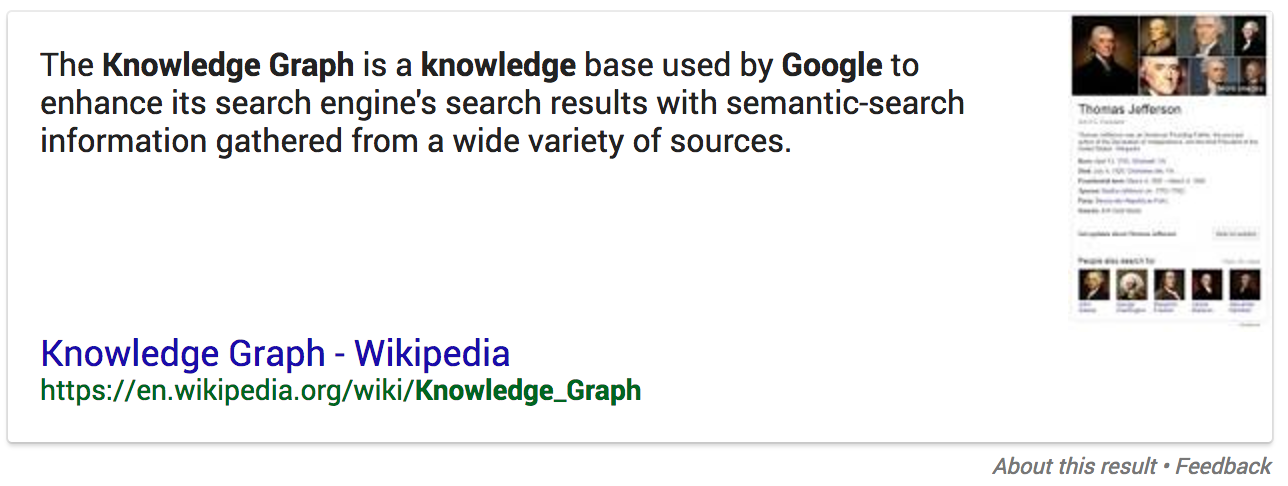
Or an assortment of relevant information on the right side of the SERP.
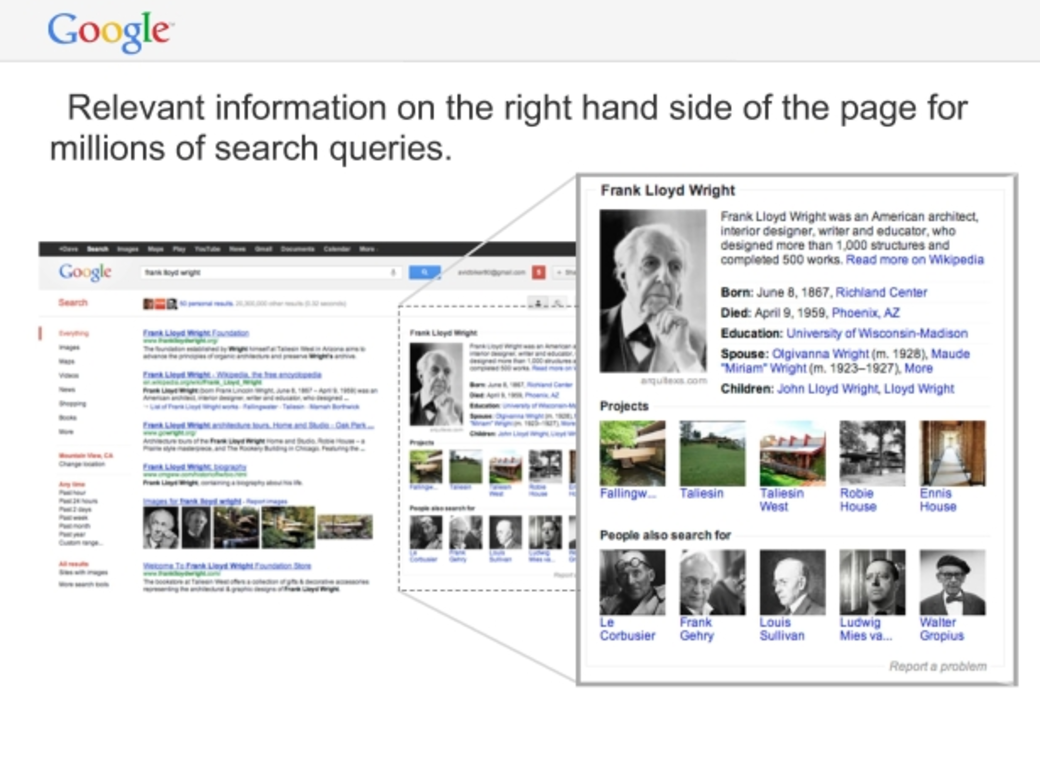
Aligning your Content Strategy with KG Ideology
The Knowledge graph is harder to impress than the ordinary Google search engine. Primarily, because Google is really trying to emphasize the relevancy factor of what content it shows which users.
The second reason it’s harder to rank in the K.Graph as opposed to the regular SERP is because the K.Graph emphasizes the connectivity and diverse activity of your different posts and pages. In the screenshot below you can see that the knowledge graph snippet is being pulled from multiple different sources and platforms, all about the same, relevantly linked topic.
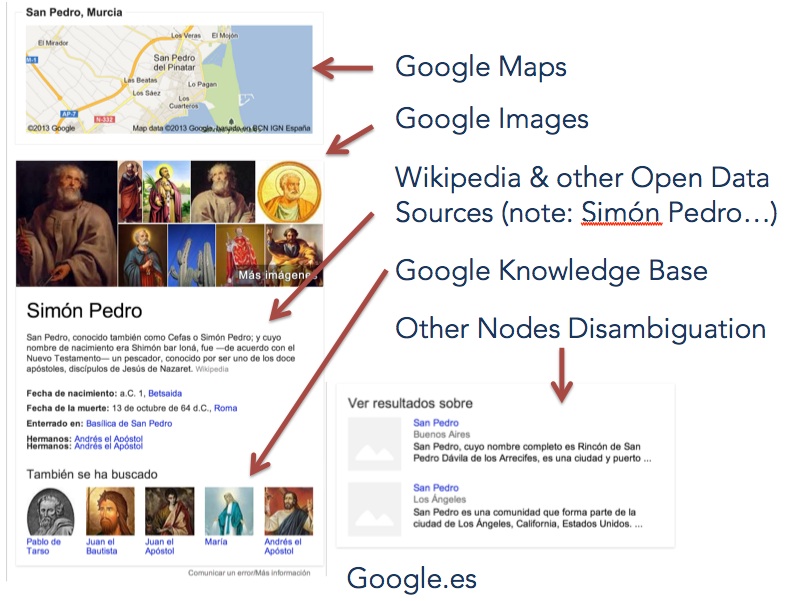
This year, before you start taking action to get on the Knowledge Graph, you’ll have to set some new goal metrics for yourself.
Determine how you can increase your social followers, release high-quality content consistently, place backlinks, interact with social followers, and increase your presence on the internet.
If you do all of these, you’ll create your own “web of intrigue” that Google will recognize and reward you for.

How to get on the Knowledge Graph
To build up and bolster that web of intrigue, you’ll have to diversify your SERP efforts to target different platforms, channels, and digital placements.
Social Platforms
First, start off by establishing a solid and consistent brand on multiple, synced social media platforms.
- Establish your brand on social media sites, since the Knowledge Graph will place those social buttons with your information when searched. This includes Google+, Twitter, Facebook, Instagram, Pinterest, etc.
- Optimize your Google+ account by posting your content on there. Google favors its own platforms. It’s also a great platform for business listings and promoting content to other industry thought leaders.
- Increase your social engagements with your customers, followers, and peers to show that you’re active in the online community. The more active your social engagement is with your readership, the higher up in the Knowledge Graph those pieces will rank.

Creating/Linking Content for K.Graph
Of course, improving your social presence isn’t the only thing you’ll need to do to impress the K.Graph. You need to also be building your own domain and filling your sub-pages with loads of relevant, related, and interlinked content posts.
- Consistently put out great content (written, video, photos, etc.) on your website and other high-ranking sites.
- Backlink internally to relevant services pages and blog posts on your site. Your service pages are where the real conversions and sales are happening. This is where the most valuable backlinks will point.
Too many search marketers today point each and every backlink to their homepage.
Don’t just use backlinks for ranking, consider them unique channels to funnel traffic from guest posts to actually vital service pages of your site so you can build your brand while also making sales.
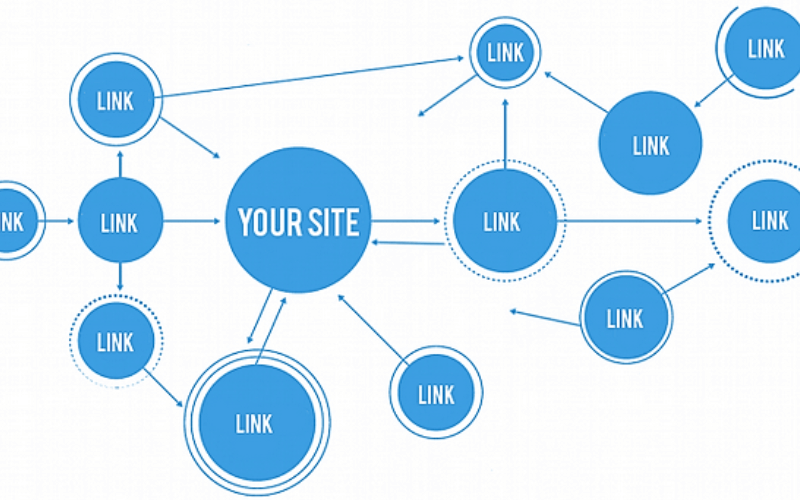
Maximize Relevant Engagements
It’s also important that you bolster your readership’s engagement with actual content on your site as well as social media posts. The more “helpful” and “relevant” the post is in Google’s eyes, the higher you are going to rank.
- Participate in conversations online that relate your brand and niche, on high profile websites, comments sections, and message boards for example.
- Make sure all of your social profiles and websites show consistent information and language in regards to your brand. For example, you should always include the same biography for your CEO if she guests posts on a blog. Your Google business page contact information should be the same as your Yelp page and your website, too.
- Optimize your brand for local searches, if possible, because Google will often place local businesses in the Knowledge Graph. To do this, you’ll have to create content and include the right keywords for your brand that signal where you’re located and what you do.
- Diversify your search engine results page market share with maps, reviews, and directories. Especially with the nature of the shrinking SERP – we need to start discussing market share instead of top 5 ranked pages.
- Encourage reviews of your brand and allow yourself to be placed on third party lists. Make sure you respond to any reviews or comments, especially when negative. These are great opportunities to build your brand and generate repeat visitors. Also, the more the number of unique interactions on a single post, the more “relevant” and “helpful” the Knowledge Graph will see it.

Wikipedia – No, Seriously, You Need to be on Wikipedia
This may seem like a crazy idea, but the Knowledge Graph pulls data from so many different sources about so many different topics that it isn’t exactly shocking. Especially when it comes to employee bios and titles at given organizations, Wikidata is almost always the source the K.Graph is pulling from.
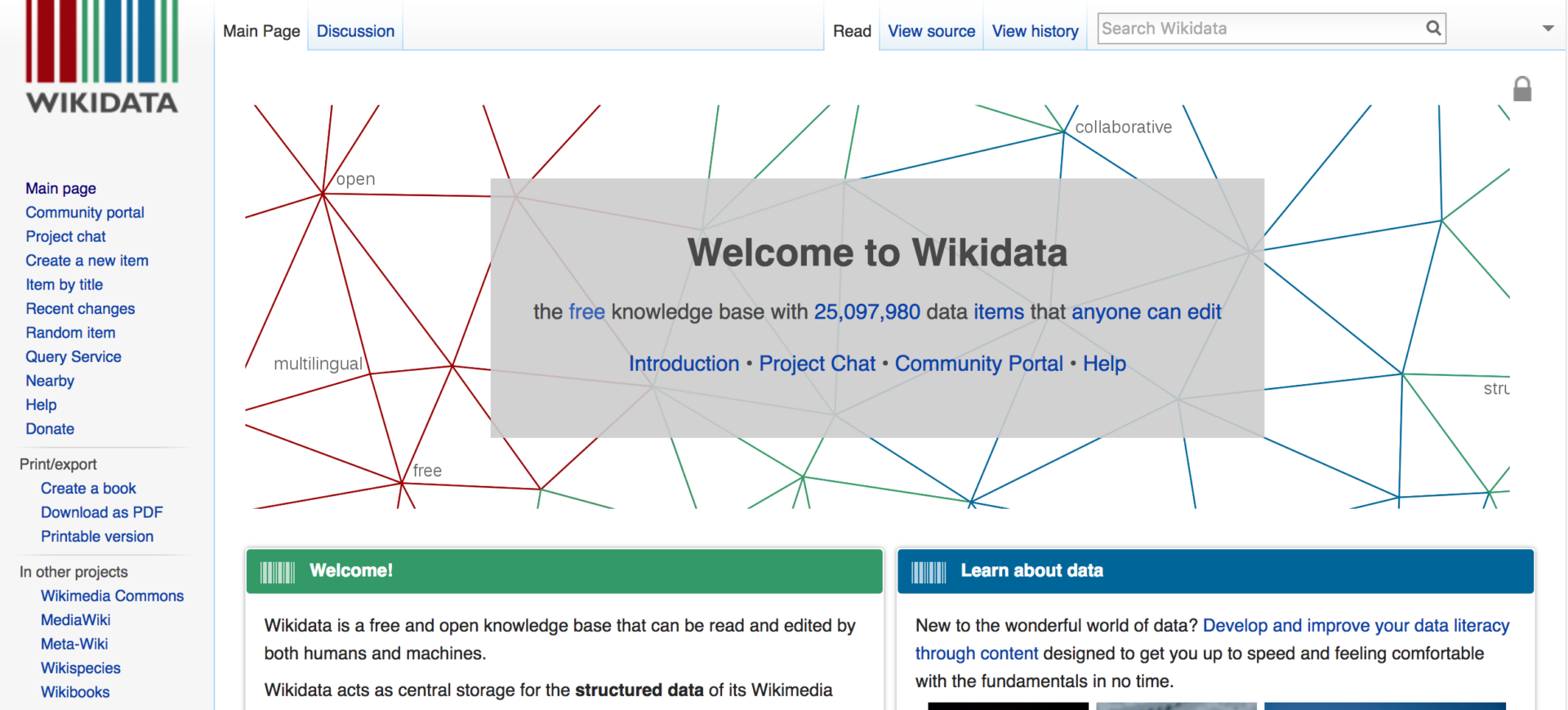
If you don’t have a wikipedia page for your company, you should ask yourself why:
Are you not big enough yet to generate the intrigue necessary for a user to search you in Wikipedia? Or is your brand still so small that it is only known to local marketers? Either way – if you want to rank for the K.Graph you need to get on Wiki.
- Start off with a flat organization of your wiki page. Keep it very oriented to the different services or products you offer on your actual site. This info should include things like your location, the year you founded the business, who the different C-suite execs are, etc.
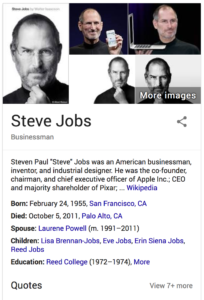
- Use as many definitions and example lists as you can when describing your services (whenever possible). If well organized, these are great content pieces to Google and can be pulled as direct answers/definitions not only for the K.Graph, but Featured Snippets as well.
- Organize sub-sections with bold. Google really likes this and can often be seen pulling the bolded answer from a content piece for a Featured Snippet, even though the real content to the answer is the unbolded paragraph that follows.
Takeaways: Five 10-Minute Tactics to Build Your “Web of Intrigue”
Want to get started with creating your own “web of intrigue?” Take a few minutes out of your day and start with the following tactics:
- Establish a LinkedIn Showcase page for your brand. You can share content for a targeted audience on this page, use sponsored content, and emphasize specific aspects of your business. A great place to start building a resource hub of your best thought leadership and branded blog posts to generate some engagements amongst users.
- Participate in the Quora community by answering people’s questions and including links to your blog posts. This is a great tool for organic promotion as well as building your brand (if you’re providing helpful answers).
- Monitor and sync your branded social profiles. Make sure they all have a similar look, feel, and language. And make sure none are collecting cobwebs.
- Combine branded promotion with personal profile promotion. For example, you can post links to your brand’s content on your personal LinkedIn page or Twitter stream. This is a really clever way to get the social sharing train rolling. Especially if you know how to plug/promote the content as if you didn’t write it: “Hey everyone, just found this awesome post on XYZ – give it a read!”
- Ask for testimonial exchange offers with authoritative influencers in your niche. This is an awesome and quick way to get some really high-quality backlinks for your site. Think of yourself as a customer and send glowing testimonials and reviews to sites or services that you’ve used before – ask them to post the testimonial on their service pages if they like it and have them backlink to your site in the bio.
Important to Remember: I previously mentioned that making a branded Wikipedia page is a huge step to optimizing your ranking in the Google Knowledge Graph.
But, it’s important to remember that data hubs like Wikipedia are selective about who they let post content and pages on their domain. If you get caught building a branded Wikipedia page about yourself before WIKI or Google decide that your business is big enough to deserve one, they’ll slam down on you for purposely flooding Wikidata with your own spammy content.

This means you should hold off on creating a Wikipedia page until you thoroughly build your “web of intrigue” with social capital and industry trust.
There are no shortcuts when it comes to ranking on the Knowledge Graph. But once you achieve it, your brand is going to gain even more followers and increase its standing in your industry.
A thick and sticky “web of intrigue” will surely catch you plenty of leads.


